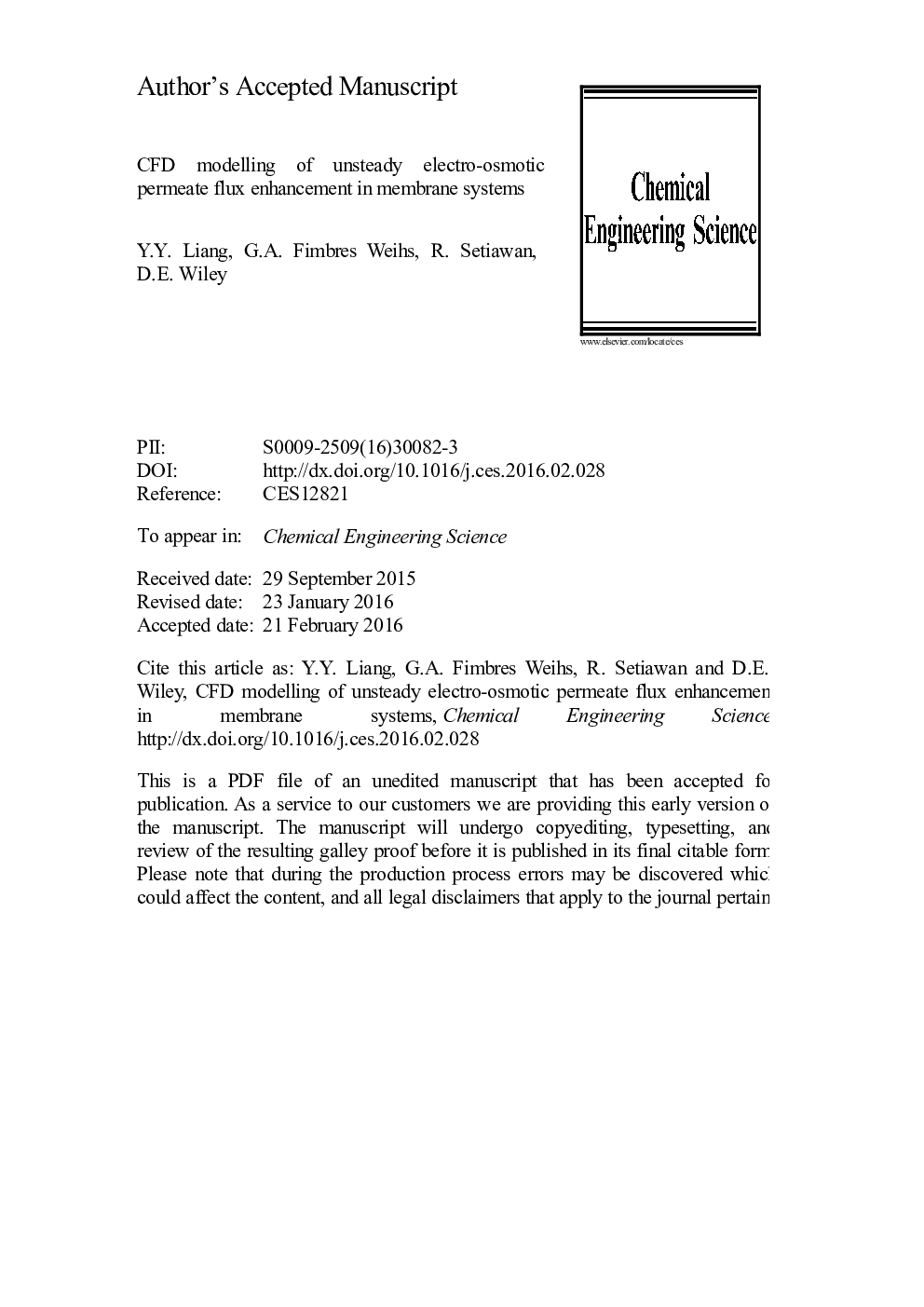| Article ID | Journal | Published Year | Pages | File Type |
|---|---|---|---|---|
| 6589182 | Chemical Engineering Science | 2016 | 31 Pages |
Abstract
Electro-osmotic flow (EOF) perturbations induced near the membrane surface are a promising approach to increase wall shear, which in turn has the potential to slow the onset of fouling for nanofiltration and reverse osmosis processes. As such, it is important to understand the mechanisms that increase wall shear and mass transfer resulting from time-varying EOF perturbations. In this paper, a Computational Fluid Dynamics (CFD) model is used to simulate spatially-uniform unsteady EOF with permeation inside a 2D unobstructed empty membrane channel. Time-averaged permeate flux is used to measure productivity and maximum shear rate is used as a proxy measure for fouling reduction/prevention. The dependencies of solute concentration amplitude and maximum wall stress on slip velocity amplitude are shown to be linear, both in terms of homogeneity and additivity. This implies that time-averaged hydrodynamics and mass transfer do not vary significantly regardless of changes in the frequency and amplitude of the slip velocity, because the effect is cancelled within the time oscillation period. Nevertheless, there are still advantages for this type of perturbation, as larger slip velocity frequency and amplitude increase the maximum wall stress with a negligible change in time-averaged pressure drop, which may have advantages for limiting concentration polarisation and fouling.
Related Topics
Physical Sciences and Engineering
Chemical Engineering
Chemical Engineering (General)
Authors
Yong Yeow Liang, Gustavo Fimbres Weihs, Ridwan Setiawan, Dianne Wiley,
